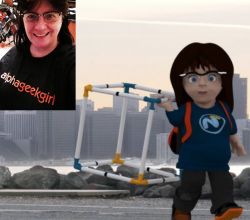The Preview Renderer now lets you specify a total Render Time, giving you a predictable way to meet deadlines as you render out to an image sequence or a movie file. Although modo tries to fit within the constraints you've imposed, you'll still need to be reasonable. For instance, with movies, say you want one second of video - don't expect modo to render out 24 nicely rendered frames in half an hour. What I do, is start to render out one frame just to get an idea of how long it will take, and then halve that time and multiply it by the number of frames you have. Yes, it can still end up taking a long time, but it's so worth it especially when you know you're going to have to make some adjustments anyway. Note: As the time of writing, if you try to place modo in the background while you get on with other work, you will get an error message saying that modo 'lost focus' and aborted. This error message is not evident until you maximize modo again and can be very disappointing if you have been waiting hours already. I suggest like a regular render, that you set it up on a dedicated machine and walk away. As an alternative, if you just want to check your composition, blocking and timing and you're not fussed about colours, textures, lighting or render quality, you could always do a playblast through your viewport window. |










 0%
0%






